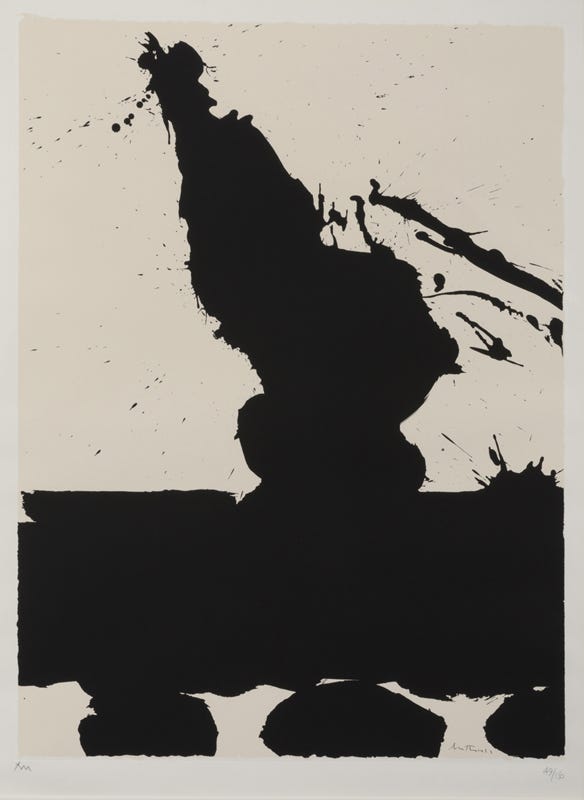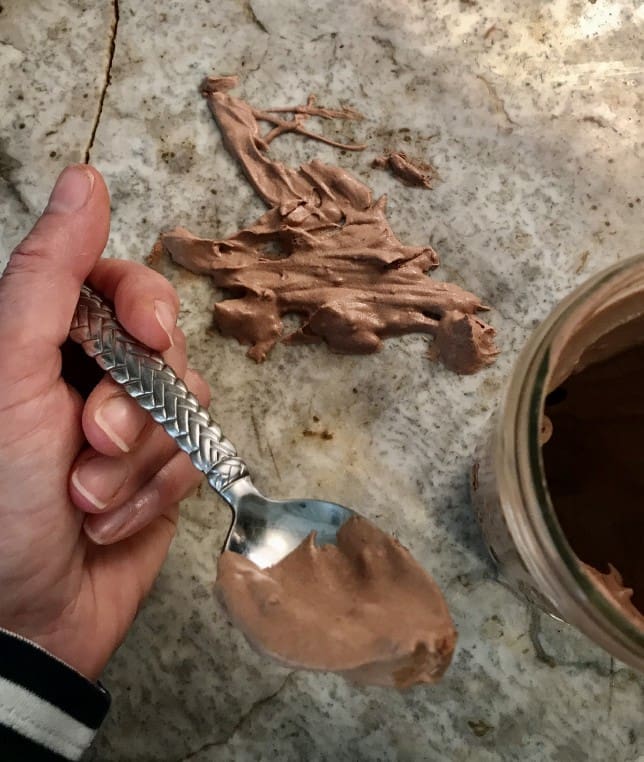This regular series uses the Akron Art Museum’s collection as a source for inspiration for meals to cook at home. Links to recipes at the end of the post.
Chocolate Mousse
This recipe is as easy as 1–2–3.
Seriously.

Robert Motherwell was an American Abstract Expressionist painter, influenced by the automatic writing & drawing prescribed by the Surrealists. He says abstract art is driven by what he called an unquenchable need “for felt experience — intense, immediate, direct, subtle, unified, warm, vivid, rhythmic.” These words, which at times oppose each other, are apt descriptors for the monumental Africa Series, whose shapes & gestures feel animated & mobile, even while they are most certainly flat.
Why am I so often drawn to artworks in black & white? As a docent & studio art educator at Akron Art Museum, I am surrounded by a wonderful world of art elements: line, shape, colour, texture, space, & light (teacher’s got to teach). You’ll see hints of my favourite black & white stripey shirts in studio lesson photographs. Why black & white? The answer appeared on page 33, one unassuming afternoon, inside the book, How to Talk to Children about Modern Art, by Françoise Barbe-Gall:
Black and white [abridged] The use of black and white comes more from the tradition of drawing than painting and supposes a focus on the basics: sketches and drafts and, of course, of writing. They emphasize the essence of what is ‘said’ — or rather the thought that inspires an image. …When Picasso decided to paint Guernica in black and white he was aligning his means of expression with the newspapers which broke the story of Guernica’s bombing. So the painting was both a picture and a text. Guernica presented a world divided in two between black and white. Commentators highlighted the link with Far Eastern calligraphy and it inspired numerous artists after the 1940s, particularly in the USA. Fascinated by Picasso’s work, which was exhibited in NY, young painters discovered in it an alternative to realism, as well as a true commentary. The development of this new vocabulary is to be seen in the works of Franz Kline, Jackson Pollock, Willem De Kooning” …and Robert Motherwell. Motherwell’s practice was characterized by an intuitive approach to painting. “Painting is a medium in which the mind can actualize itself; it is a medium of thought,” he once reflected.
A REVELATION! In addition to creating art, I am also a word nerd: writing, playing with puns, & appreciating alliterations, or a truly great font. This must be why I am so often subconsciously drawn (yep, that pun was intended) to the symbolism of black & white art.
Want to know what else is a revelation? Robert Motherwell’s Chocolate Mousse.
Talk about an abstract RECIPE that is not only driven by an unquenchable need for chocolate, but is also an expressionistic gesture drawing in food!
In a jar with a lid, combine:
3 ingredients
1/2 cup heavy cream
2 tbls cocoa powder
3 tsp powdered sugar
2 minutes to vigorously shake
1 spoon to enjoy seriously decadent & fluffy mousse!
Cooking with the Collection is made possible with support from Acme Fresh Market, the Henry V. and Frances W. Christenson Foundation, and the Samuel Reese Willis Foundation.




